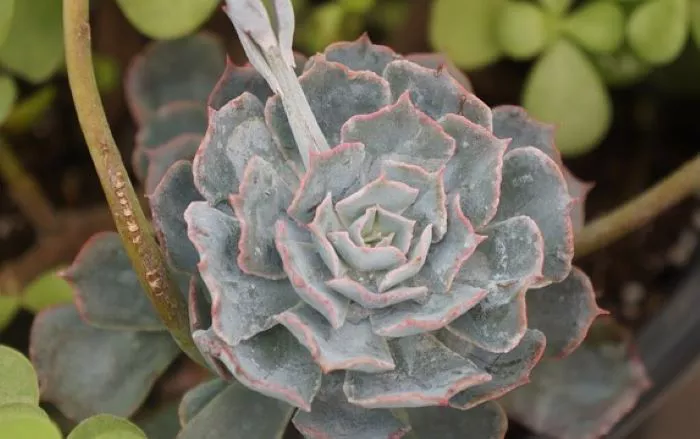Growing succulents from seeds can be a rewarding and engaging experience. Many plant enthusiasts are drawn to the idea of starting their gardens from seeds, as it allows for a greater variety of plants and a deeper connection to the growing process. However, growing succulents from seeds can be challenging. This article will explore the difficulties and rewards of growing succulents from seeds. You will learn about the seed selection, germination process, and care required for these plants.
Understanding Succulent Seeds
Succulent seeds are tiny and often require specific conditions to germinate. Unlike many other plants, succulents have unique adaptations that allow them to thrive in arid environments. This means that their seeds may have different requirements compared to seeds of other plants. Understanding these differences is essential for successful germination.
Succulent seeds can vary significantly in size and shape. Some seeds are very small, while others are larger and more robust. The type of succulent you are trying to grow will influence the germination process. For example, seeds from Echeveria or Sedum species may behave differently than those from Aloe or Haworthia.
Choosing the Right Seeds
The first step in growing succulents from seeds is selecting the right seeds. Look for seeds from reputable sources, such as nurseries or online retailers specializing in succulents. Ensure that the seeds are fresh and viable. Check the packaging for a harvest date or expiration date. Fresh seeds will have a higher germination rate.
Consider the climate and growing conditions in your area when choosing succulent seeds. Some succulents are better suited for specific environments. For example, some species thrive in full sun, while others prefer partial shade. Selecting seeds that match your growing conditions will increase your chances of success.
Preparing for Germination
Once you have chosen your seeds, the next step is to prepare for germination. Start by gathering the necessary materials. You will need seed trays or small pots, a well-draining potting mix, and a clear plastic cover or plastic wrap.
A well-draining potting mix is crucial for succulent seed germination. You can purchase a commercial cactus mix or create your own by combining regular potting soil with perlite or sand. A good ratio is two parts potting soil to one part perlite or sand. This mixture will help prevent water from accumulating around the seeds.
Fill the seed trays or pots with the prepared potting mix. Leave a small gap at the top to prevent soil from spilling over when watering. Lightly moisten the soil before planting the seeds. This will help ensure good seed-to-soil contact.
Sowing the Seeds
Sow the seeds evenly across the surface of the soil. Do not bury them too deeply, as most succulent seeds require light for germination. Gently press the seeds into the soil to ensure good contact. If the seeds are very small, you can sprinkle them on top of the soil and lightly press them down.
After sowing the seeds, cover the seed trays or pots with a clear plastic cover or plastic wrap. This will help maintain humidity and create a greenhouse effect, which is beneficial for germination. Place the trays in a warm location with indirect sunlight. The ideal temperature for germination is typically between 70°F and 80°F (21°C to 27°C).
Germination Process
The germination process for succulent seeds can take anywhere from a few days to several weeks, depending on the species. During this time, it is essential to monitor the moisture levels in the soil. The soil should remain consistently moist but not soggy. Remove the plastic cover periodically to allow for air circulation and to prevent mold growth.
Once the seeds germinate, you will notice tiny seedlings emerging from the soil. At this stage, it is crucial to provide adequate light for the seedlings. If they do not receive enough light, they may become leggy and weak. A south-facing window or a grow light can provide the necessary light conditions for healthy growth.
Caring for Seedlings
After germination, the seedlings will require careful attention. Continue to keep the soil moist but not overly wet. As the seedlings grow, gradually reduce humidity by removing the plastic cover completely. This will help acclimate the young plants to normal humidity levels.
Once the seedlings develop a few sets of true leaves, they can be transplanted into individual pots. Use a well-draining potting mix similar to what you used for germination. Handle the seedlings gently to avoid damaging their delicate roots.
Challenges of Growing Succulents from Seeds
While growing succulents from seeds can be rewarding, it also comes with challenges. One of the main difficulties is the slow germination process. Some succulent seeds can take weeks or even months to germinate. This requires patience and careful monitoring.
Another challenge is the risk of damping off, a fungal disease that affects seedlings. To prevent this, ensure good air circulation and avoid overwatering. Using sterilized soil and containers can also help reduce the risk of disease.
Additionally, not all seeds may germinate successfully. Factors such as temperature, humidity, and soil conditions can affect germination rates. It is essential to manage these factors carefully to improve your chances of success.
Conclusion
Growing succulents from seeds can be a challenging yet fulfilling endeavor. While it requires patience and attention to detail, the rewards of nurturing your plants from seed to maturity can be significant. By choosing the right seeds, preparing adequately for germination, and providing proper care, you can successfully grow a variety of succulents from seeds. Whether you are an experienced gardener or a beginner, this process can deepen your appreciation for these resilient plants and enhance your gardening skills. Enjoy the journey of growing succulents from seeds and watch your efforts blossom into beautiful plants.


